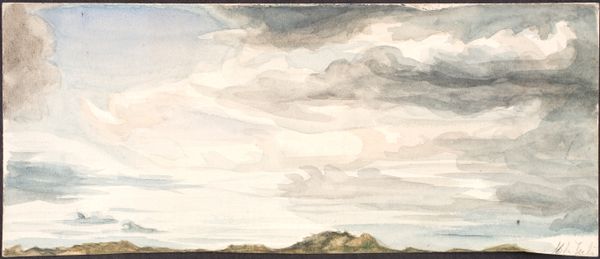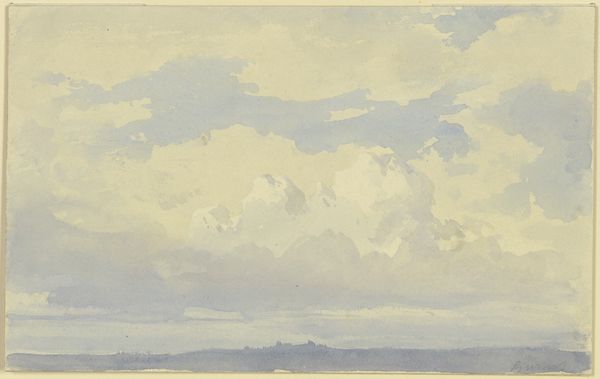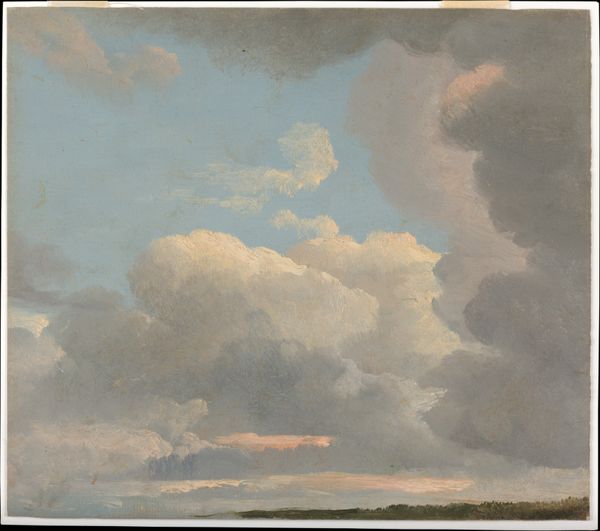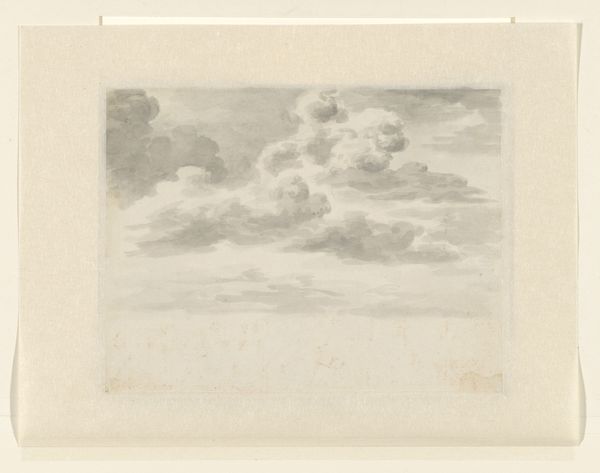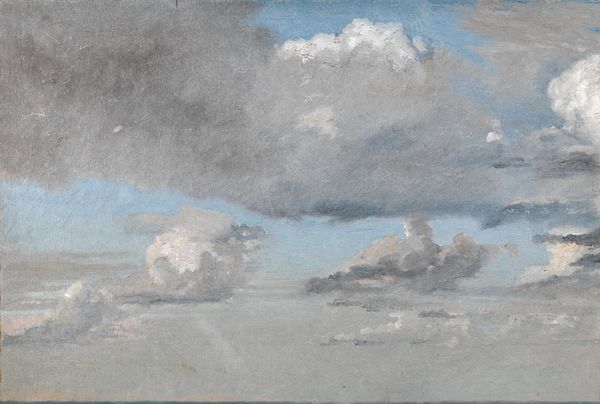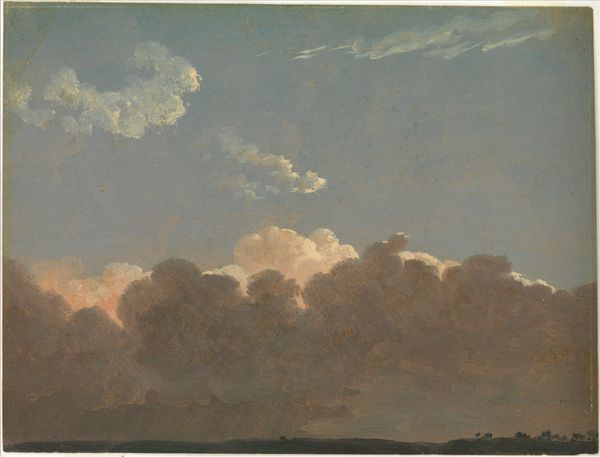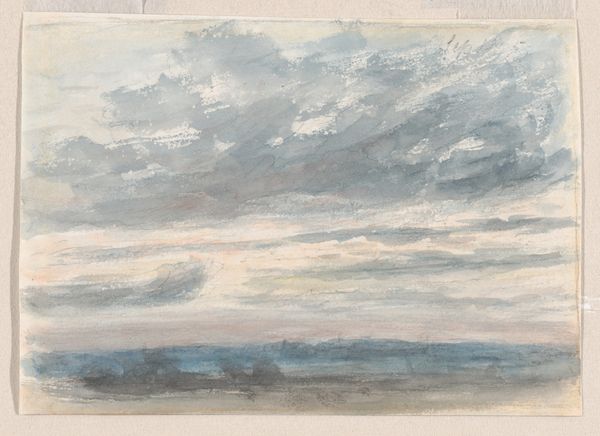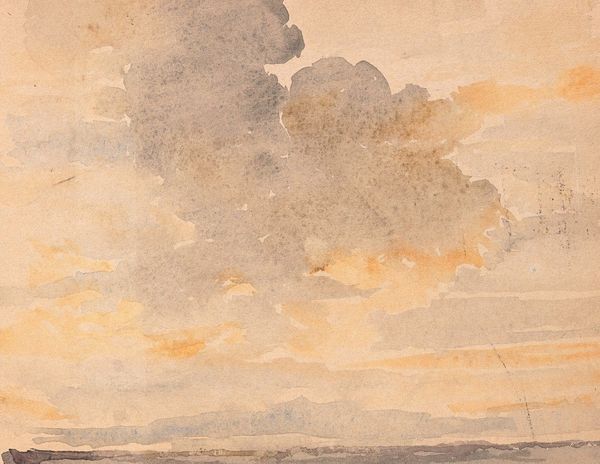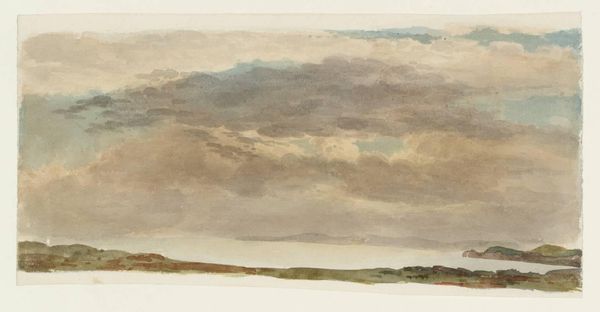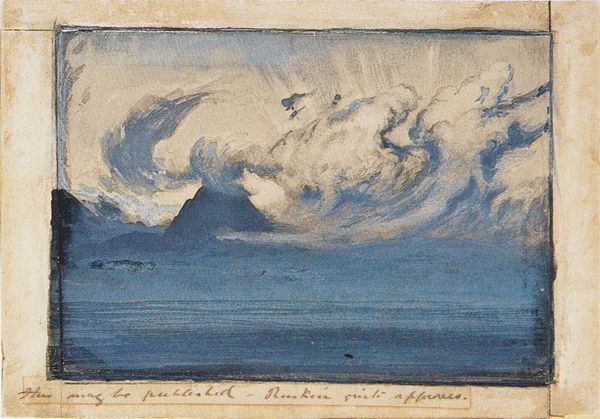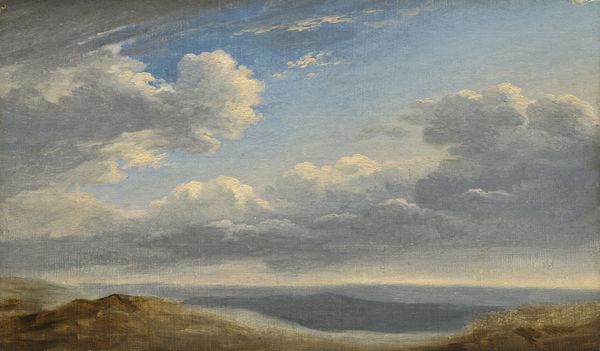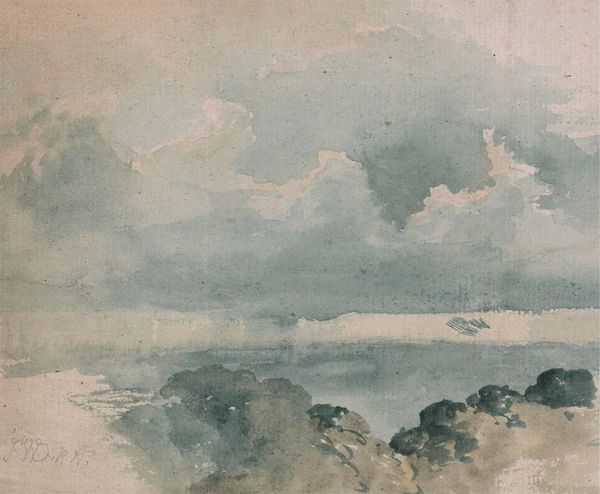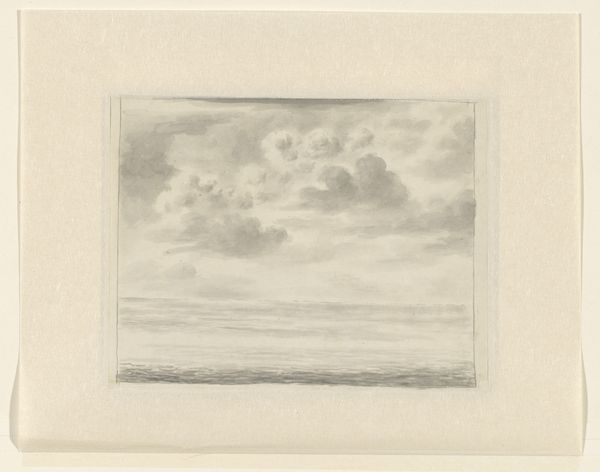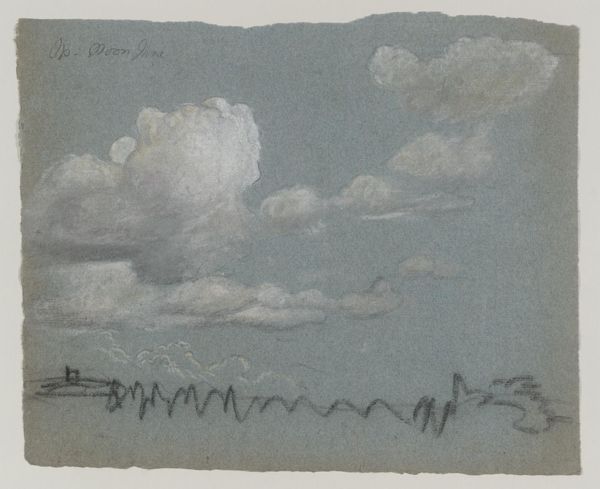
drawing, watercolor
#
drawing
#
water colours
#
landscape
#
watercolor
#
coloured pencil
#
romanticism
Dimensions: 105 mm (height) x 176 mm (width) (bladmaal)
Editor: Here we have Martinus Rørbye's "Skystudie" from 1832, a watercolor and coloured pencil drawing. The delicacy of the rendering really strikes me. How would you unpack this artwork? Curator: Let’s consider Rørbye's choice of watercolour and coloured pencil. What kind of labour does this process entail compared to, say, oil painting, which was more commonly appreciated? Was watercolor seen as “lesser” due to its associations with amateur artmaking or female artistry? Consider who was creating such artworks, for what markets, and in what contexts of professional versus amateur production. Editor: That’s fascinating. So, rather than simply appreciating the aesthetic of the clouds, we should think about the social context surrounding the artist's choice of materials. Was he perhaps exploring a new market or catering to a different type of art consumer? Curator: Exactly. And think about the “studie” aspect. This suggests observation, practice – raw data before its refinement in the academy or a finished work. We might think about how the commodification of “sketches” like these reflect changing values regarding artistic labor during the Romantic period. Editor: So, the means of production—the very materials and process—are intertwined with how we value and understand the artwork within its social context. This wasn't just about capturing the beauty of the sky. It’s about how art itself was made and valued. Curator: Precisely. And those considerations are very pertinent to appreciating the choices an artist makes. What began as capturing atmospheric effects actually carries the burden of an art form establishing itself as culturally important and distinct from a simple representation of the environment. Editor: This reframes my whole understanding. I now see that this watercolor sketch also exists in relation to a whole matrix of socio-economic art practices and beliefs!
Comments
No comments
Be the first to comment and join the conversation on the ultimate creative platform.
